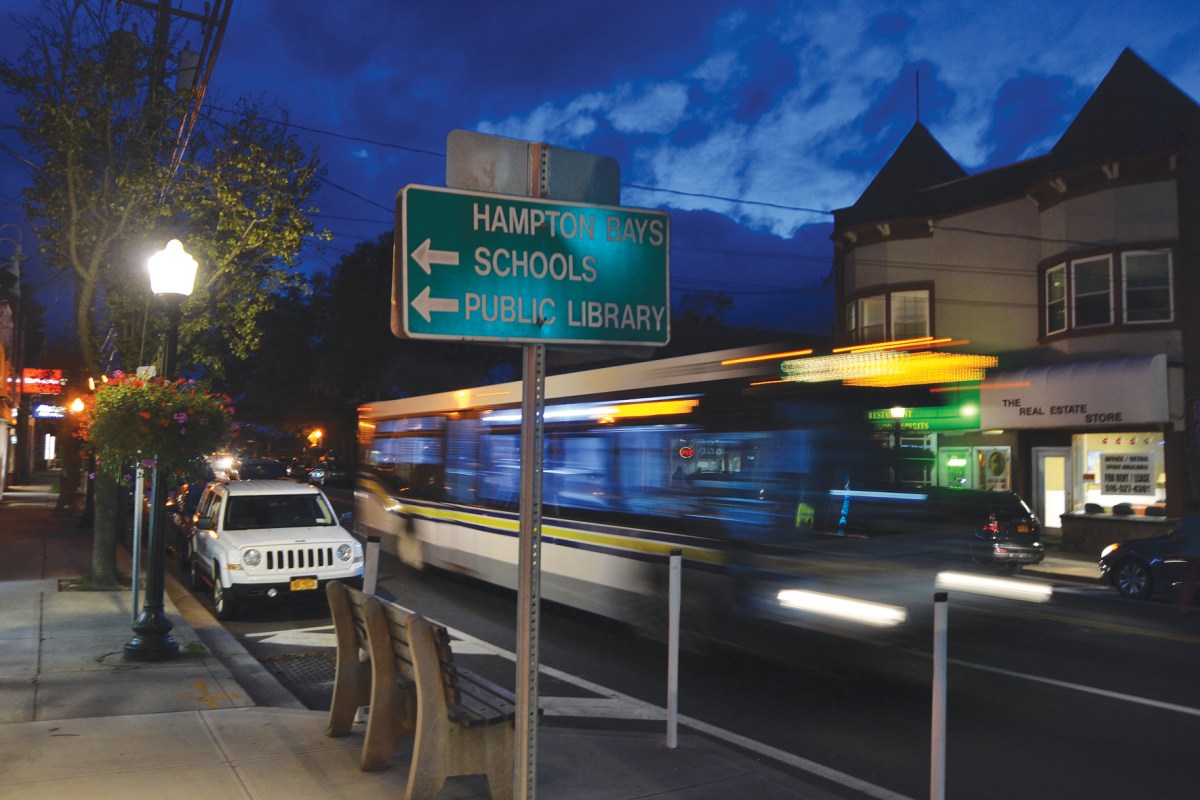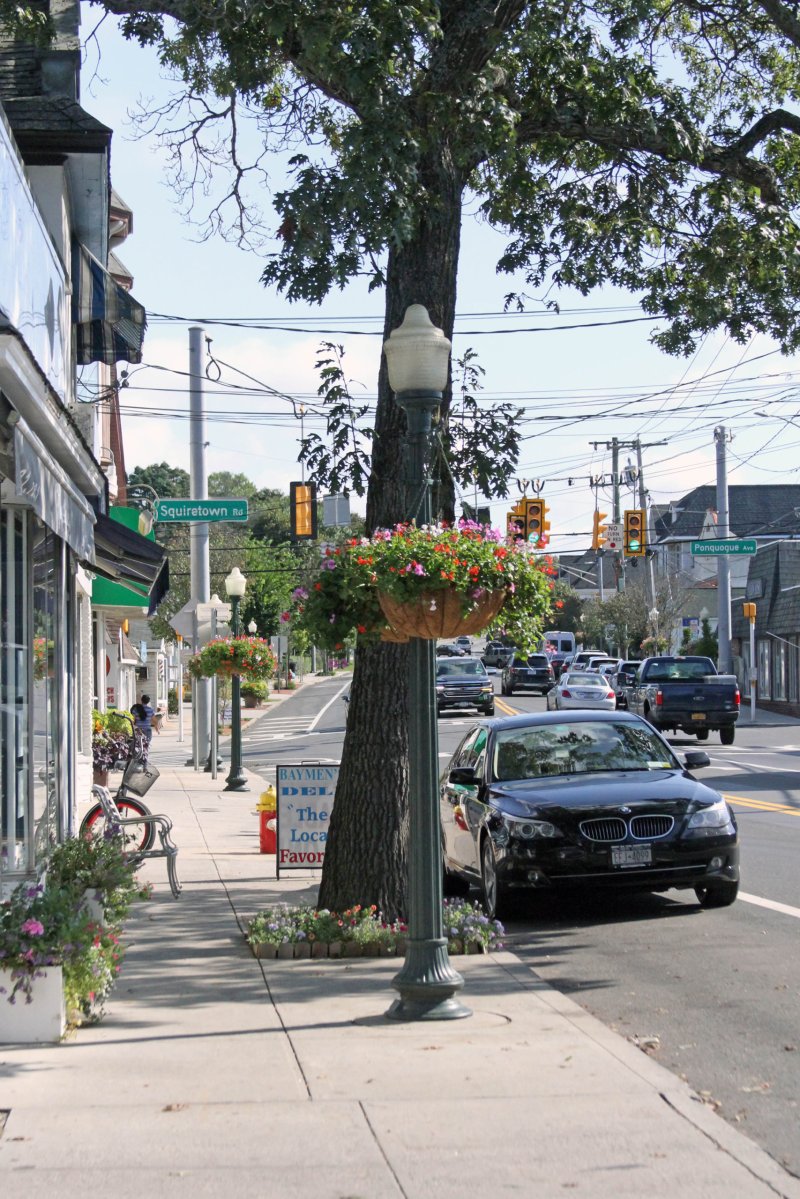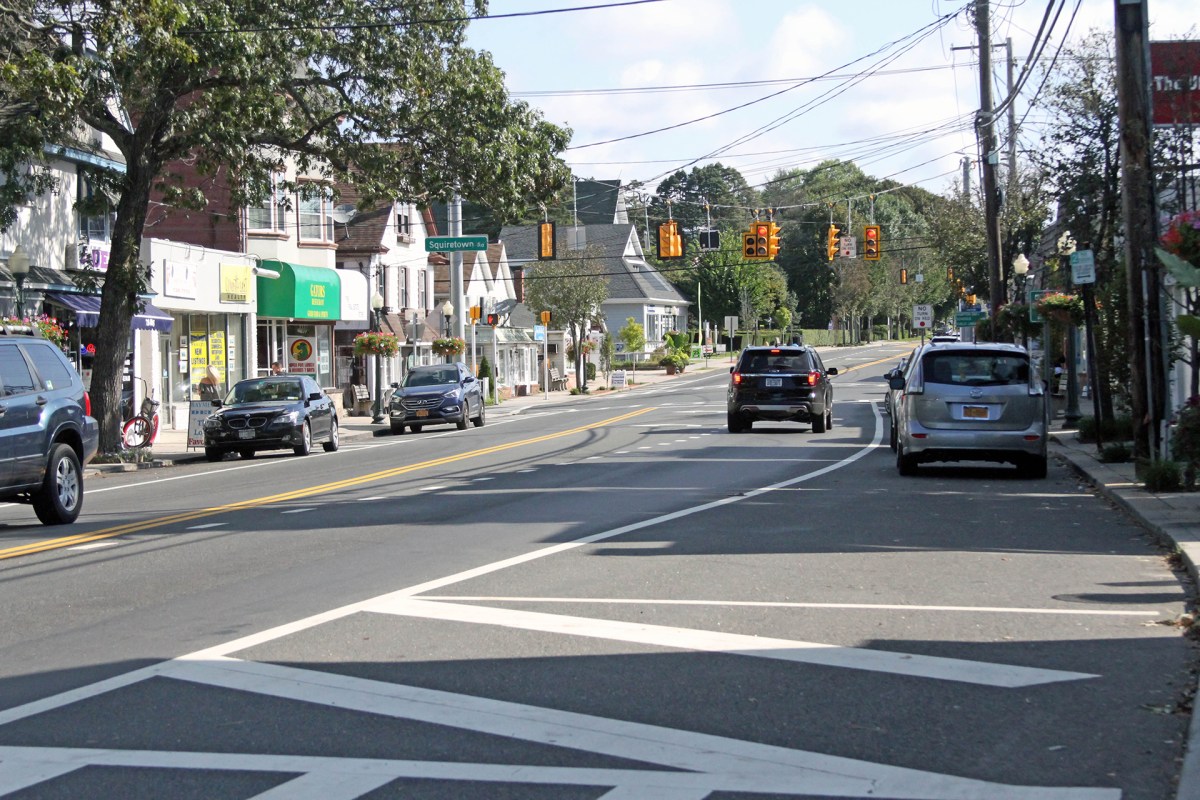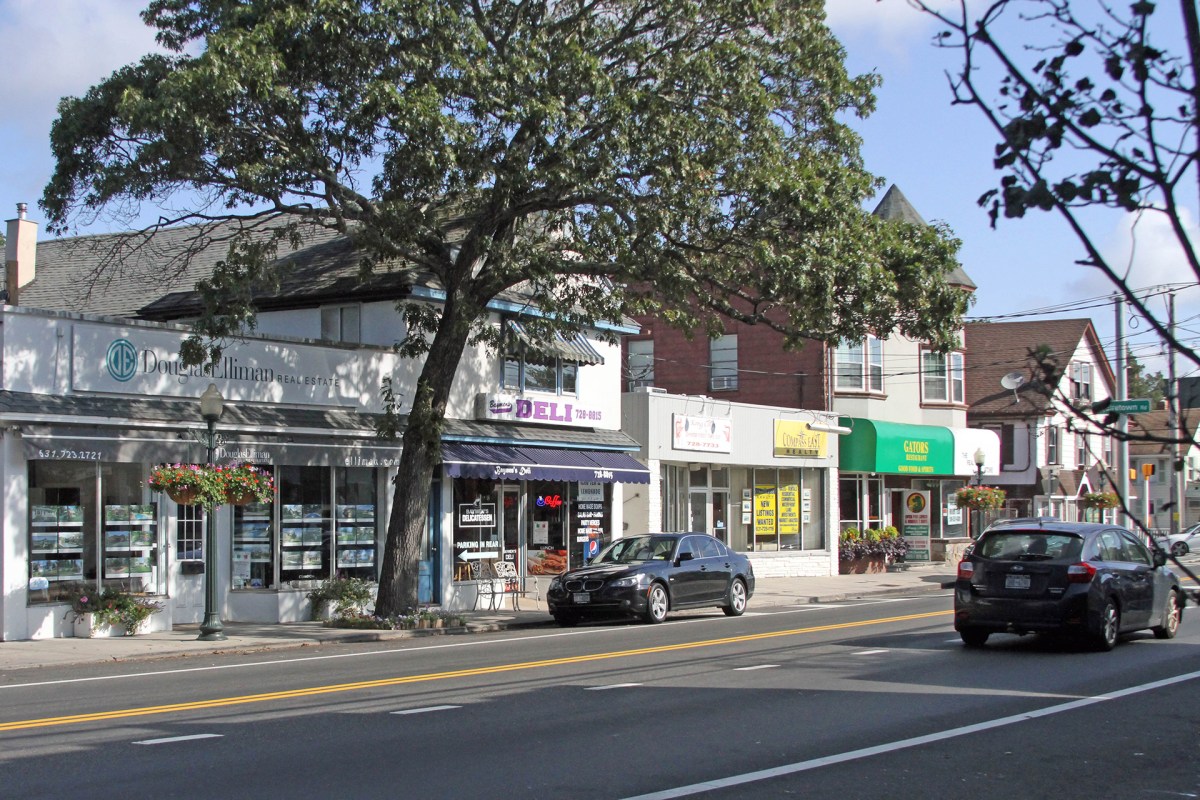Hoping For A Bustling Downtown
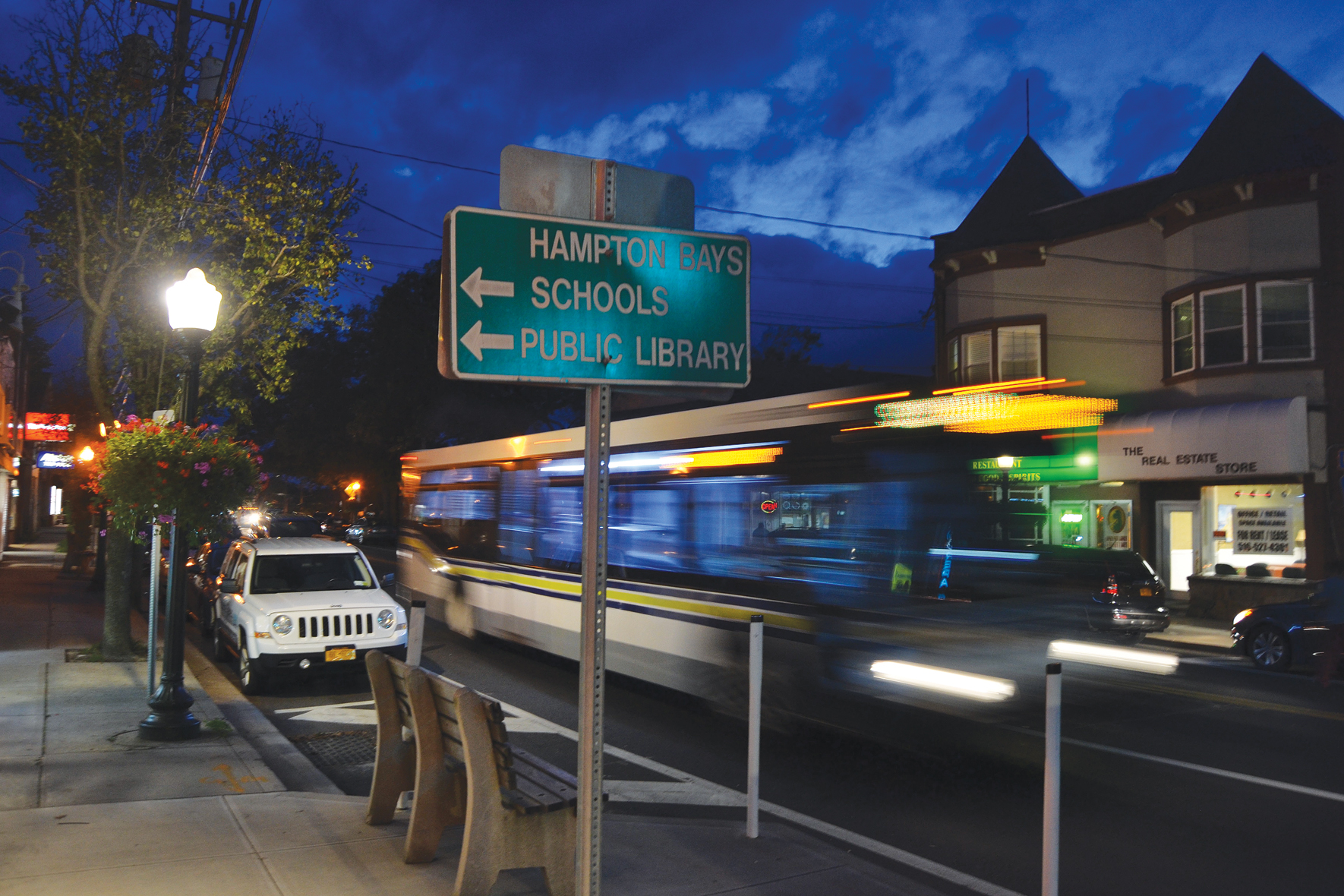
Southampton Town is emphasizing design over use when it comes to revitalizing downtown Hampton Bays, and plenty of residents had things to say about both during a community update this week.
Proper placement of businesses, bringing in ones that can help the area compete with online retailers, and encouraging those that would draw young people downtown, were some of the topics brought up before nearly 100 people packed inside the Hampton Bays Community Center on Ponquogue Avenue September 17. Currently, the town is in a rezoning transition — along Good Ground Road to the south of Good Ground Park, between Springville and Ponquogue roads along Montauk Highway to the Hampton Bays train station — with an eye toward turning properties zoned for highway business to commercial use.
Listening to the wants and needs of residents, town Planning and Development Administrator Kyle Collins said he believes the plan put forth, while taking a long-term approach, will yield the results residents hope for.
“In order for a downtown to compete with online shopping, it needs to create a place where people want to be,” Collins said, agreeing with residents in attendance who shared similar opinions. “If it’s not a place where people want to be, they’re going to sit on their couch and buy things online. It’s really critical to create a downtown with a sense of place.”
Hampton Bays resident Kevin McDonald sided with the panel of Collins, town Principal Planner Janice Scherer, and Nelson, Pop and Voorhis Senior Partner Carrie O’Farrell who said creating better traffic flow through the downtown district, creating more pedestrian access with walkways, and attracting storefronts designed with character were all ways in which the town is heading in the right direction for drawing people in. But he also had other opinions to share, especially when it came to placing businesses across from the park.
“What about sidewalks that enable café-style dining?” he asked, adding that he doesn’t want to see businesses like a nail salon or a wood-chipping facility taking up space that could be better suited for other stores. “If you have a coffee shop where you can sit outside, and not up against a car grill but up against something pleasant, or you had a view overlooking the park — that’s what we’re hoping for at this conclusion,” he said. “Maybe even a micro-brewery like they have in Patchogue.”
While there isn’t space for this currently along Montauk Highway, where stores such as 7-Eleven, Chase Bank, and Advance Auto Parts currently sit, the streets that run north and south, and the north side of the district facing Good Ground Park, will have the 10-foot setback and 10-foot façade zone needed to accommodate outdoor dining and larger sidewalks. The zoning change will not affect pre-existing businesses, according to Scherer, but will be mandatory for new buildings or when a current business is looking to expand or make modifications.
“Your vision near the park is the same as ours,” Collins responded. “We would like to see complementary uses.”
Bruce Doscher, a resident who spearheaded an effort to incorporate Hampton Bays into a village, made another comparison to Patchogue and Farmingdale.
“They put in huge apartment complexes, that is what is driving the economic activity to make it all happen,” he said. “There needs to be some economics being generated. More density is the only way.”
Scherer said the town is contemplating mixed-use spaces with a residential component, but said a supplemental environmental impact study is being developed to find what the thresholds are in terms of traffic and school district impact.
“We want to come to a number that everyone is comfortable with, and not just unfettered density,” she said. “I don’t want the message to get lost there. We do need an activated downtown where people live, work, and recreate, but we also need to do it in a way that is sensitive to our surroundings.”
Other residents disagreed that density was an issue. Many said it’s just about having stores that locals want to shop at, and ways in which to draw higher-end buyers in. Having the railroad station nearby, coupled with a vibrant downtown that would entice outsiders to stop, could also do just that.
Looking into what types of shops residents would like to see, Nelson, Pope and Voorhis have found a demand for businesses relating to clothing and shoes; jewelry, luggage, and leather goods; books and music; general merchandise; and specialty foods like meat markets. Other gaps found included grocery stories, gas stations, health and personal care, and florists.
“The uses contemplated are focused on things that aren’t high-order goods that would require a larger site,” Collins said, using a car dealership as an example. “We want it to be pedestrian friendly.”
desiree@indyeastend.com
